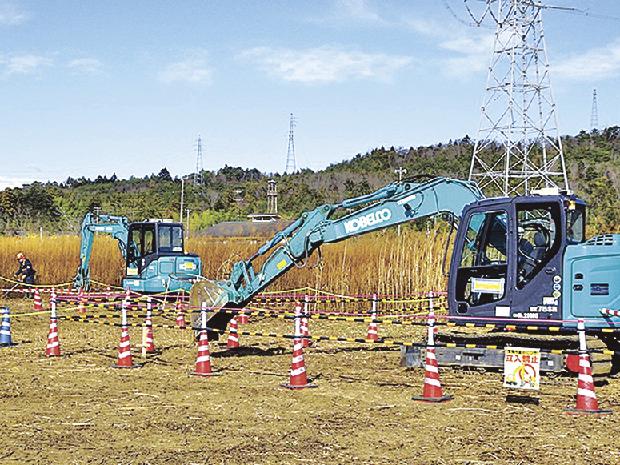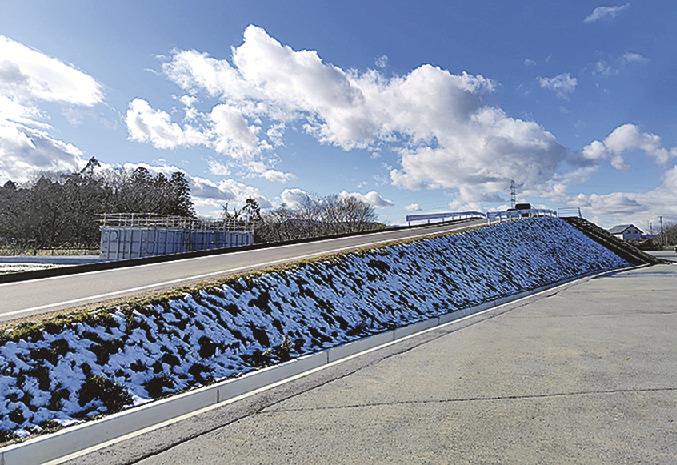The 11th marked the 13th anniversary of the Great East Japan Earthquake. Among the areas designated as difficult-to-return areas due to the nuclear disaster, the evacuation order has been lifted for all specific reconstruction and recovery facility areas (recovery facilities). , where urban development is taking place ahead of other areas, at the end of November last year. Decontamination has begun in areas other than the reconstruction bases designated as “designated residential return areas,” and recovery is progressing steadily. However, important problems remain, such as the final disposal of discarded soil outside Fukushima prefecture and the rehabilitation of disaster-hit areas which is only half completed.

The first phase of environmental improvement including decontamination has begun in the designated living area of returnees (December 20, 2016, in Okuma Town, Fukushima Prefecture)
While hardware construction has been mostly completed in areas mainly affected by earthquakes and tsunamis, there are still victims in areas affected by nuclear disasters forced to live like evacuees.

In the demonstration project, 2,700m3 of removed soil was used as road surface (February 7, at temporary storage)
At the end of last year, the government began the first steps to prepare the environment for the return of residents in areas affected by the nuclear disaster, “designated residential return zones” of the towns of Okuma and Futaba in Fukushima Prefecture. We will conduct decontamination, demolish homes and restore infrastructure such as roads, water and wastewater systems. In addition to these two towns, progress is being made in designating areas in Namie Town and Tomioka Town, and preparations for their return are expected to begin in earnest in future.
The soil (removed soil) generated by the decontamination process in the area will be transported to intermediate storage facilities (Okuma and Futaba towns). Government law stipulates that temporarily discarded soil stored at the facility must be disposed of outside Fukushima Prefecture by 2045. To reduce the amount of waste that needs to be processed, we are currently considering ways to reduce volume and recycling of waste. We are conducting a demonstration project to reuse discarded soil as road base.
The construction industry is responsible for implementing government-led environmental remediation projects, such as decontamination, development of intermediate storage facilities, and final disposal efforts outside the province. At the press conference after the Cabinet meeting on the 8th, Environment Minister Shintaro Ito, who is in charge of environmental regeneration projects, expressed gratitude saying: ``We are very grateful for the great contributions of the construction industry to date.'' He expressed hope for the company's success and said: “The cooperation of the construction industry will be essential” in promoting the project in the future.
Preparations are also underway to build facilities for the Fukushima Research and Education Institute (F-REI), which will serve as a core facility for the innovative reconstruction of Fukushima and Tohoku area. The Reconstruction Authority decided on the basic plan for the facility in January. Basic design and implementation design will begin in fiscal 2024. A start date has not yet been determined but construction is expected to begin at a site where site preparation has been completed. The aim is to gradually begin operations during the establishment of the Reconstruction Authority (by March 31, 2031) and complete construction as soon as possible.
The main prerequisite for building bases and cities for recovery is a steady effort towards decommissioning the Fukushima Daiichi Nuclear Power Plant (Okuma Town, Futaba Town), which caused the disaster. nuclear disaster. Tokyo Electric Power Company (HD) is currently continuing decommissioning work at the power plant, focusing on safety management. In August last year, water discharge into the sea from ALPS (Alps, Multinuclear Elimination System) water generated in the power plant began.
More than 10 years have passed since the natural disaster occurred. Many ministries and branches have staff seconded to the Reconstruction Agency and have experience working on reconstruction projects in disaster-stricken areas. Since the Noto Peninsula earthquake occurred on January 1, such personnel have come one after another and used the know-how and experience they have accumulated at the Reconstruction Agency to assist Local government employees are affected.
In addition to the lessons and knowledge gained from the Great East Japan Earthquake, a complex disaster, human resources developed through reconstruction activities will be essential for prevention, reduction mitigation, recovery and reconstruction of various disasters that may occur in the future.






